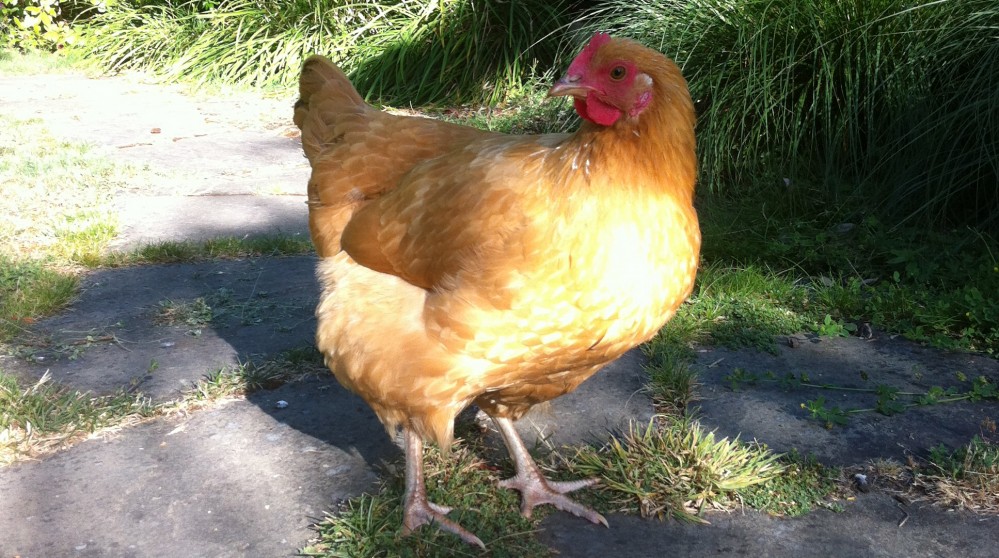Enriched caging systems which combine the convenience of battery cages with features such as perches, nest boxes and dust bathing areas (Appleby and Hughes, 1998).

(Source: United Poultry Concerns)
Researchers Pohle and Cheng (2009) compared the behavior of White Leghorn Chickens in battery cages versus furnished cages and found that the battery caged hens spent more time walking and “performing exploratory behavior” which could indicate stress and restlessness. Birds in furnished cages spent more time preening which is considered comfort behavior. The authors concluded that furnished cages, which offered 30cm² less space per bird but provided perches, a dustbath, scratch pads and private nest box, were more favorable for birds by “allowing them to perform certain natural behaviors.” The facilities in such furnished cages were well used and previous studies have indicated that 80-99% of birds will perch at night.
One study found the presence of perches in a housing system to increase bone strength by up to 15%, thus reducing breakage during handling. Perches also reduced overall feed intake, possibly due to better rest and insulation at night during roosting. (Tauson, 1998; Jendral et. al. 2008) Bone breakage during catching, handling and transportation of conventionally caged hens is estimated to be between 30-50% (Street, 2012).
Currently, enriched cages are the only caging systems allowed in the European Union as of January 1, 2012. The European Union Council stated “[i]t is clear that because of its small size and its barrenness, the battery cage as used at present has inherent severe disadvantages for the welfare of hens.”
Legislation requires cages to be at least “45 cm high and must provide 600 cm² space/hen plus 150 cm² of nest space (750 cm² space/hen total)” (Street, 2012). Comparatively, in Canada recommended furnished cage size is the same as battery cages at 432 cm² per bird (NFACC, 2003).

Roll, Victor Fernando Büttow, Briz, Ricardo Cepero, & Levrino, Gustavo Adolfo Maria. (2009). Floor versus cage rearing: effects on production, egg quality and physical condition of laying hens housed in furnished cages. Ciência Rural, 39(5), 1527-1532.
The added economic burden of an 8% increase in production costs (Elson and Tauson, 2011) has resulted in non-compliance by many producers in the European Union.
Alternatively, other countries and interest groups feel that even enriched cages do not provide an adequate level of welfare. According to the Royal Society for the Prevention of Cruelty to Animals (RSPCA), hens in any cage system are denied adequate space and problems arise such as competition over nest boxes, since hens have similar laying cycles.
Additionally, hens may lay their eggs in the dust bathing area, preventing its use and hens with lower social hierarchy may be denied use of the area (RSPCA). The RSPCA also states that health problems, “such as deformed keel bones, have been identified in hens in enriched cages. This could be due to the inappropriate shape or position of perches in cages or perhaps due to the hens perching for prolonged periods of time because there is inadequate room available for them to move around easily or to perform other activities.”
The RSPCA recommends a ban on all caging systems in the UK, with only well managed barn and free range systems to be permitted.
Germany has already prohibited all caged systems as of 2012 while Austria and Belgium plan to ban them by 2020 and 2024, respectively (Street, 2012).

I still prefer the cage system as it reduces the human labour & diseases affecting the chicken. I like the idea of enriched cages, however further research is required to improve the system to allow it to reach its full potential.